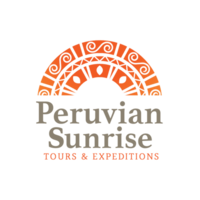Peruvian chocolate is more than just a treat; it represents centuries of tradition, culture, and craftsmanship. Chocolate has long been a part of Peruvian culture, stemming from ancient indigenous practices that revered the cacao bean as a sacred gift. In the modern world, Peruvian chocolate stands out for its exceptional quality and distinct flavors, making it a sought-after delicacy among chocolate enthusiasts worldwide.
This guide delves into the fascinating world of Peruvian chocolate, highlighting its origins, the meticulous chocolate-making process, and the best places to sample and savor this exquisite treat.
From Bean to Bar: The Complete Guide to Peruvian Chocolate
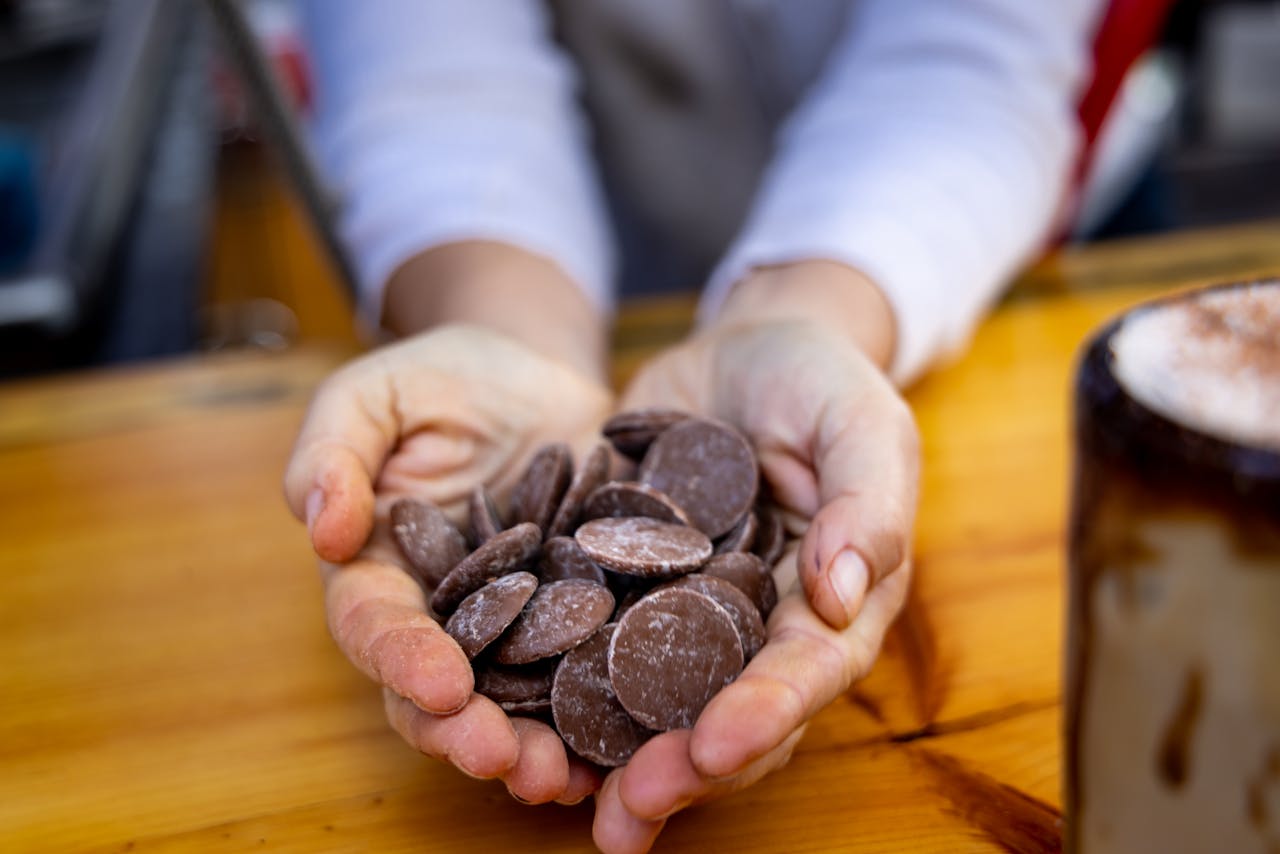
Why Peruvian Chocolate is World-Renowned
The Unique Flavor Profiles of Peruvian Cacao
The tempting taste of Peruvian chocolate starts with the cacao. Unlike mass-produced varieties found elsewhere, Peruvian cacao is known for its rich and diverse flavor profiles. The secret is in the unique conditions under which it grows. Peru's diverse climate, which ranges from the humid Amazon rainforest to the high-altitude Andean regions, creates a variety of microclimates that contribute to the unique flavors of Peruvian cacao.
High-Quality Cacao Varieties: Criollo, Trinitario, and Forastero
Peru is home to some of the world's most exquisite cacao varieties. Among them are Criollo, Trinitario, and Forastero. Criollo is a popular choice among high-end chocolatiers due to its complex flavors and low bitterness. Trinitario, a hybrid of Criollo and Forastero, has a robust flavor with a hint of bitterness. Forastero, while more common, is prized for its potent, bold flavor. Each variety adds to the rich tapestry of Peruvian chocolate, providing a diverse range of options for different tastes.
The Impact of Peru’s Diverse Climate on Cacao Production
Peru's diverse climates influence the quality of its cacao. The Amazon Basin's warm, humid climate makes it ideal for growing cacao trees, producing beans with fruity and floral notes. In contrast, the cooler, higher-altitude regions of the Andes produce beans with more earthy and nutty flavors. Peruvian chocolate's geographical diversity allows it to offer a diverse range of flavors, making it a delight for any chocolate lover.
From Bean to Bar: The Chocolate-Making Process in Peru
Harvesting: How Peruvian Farmers Grow and Harvest Cacao Beans
The journey from bean to bar begins on Peruvian cacao farms, where skilled farmers grow and harvest cacao beans. Cacao trees thrive in Peru's tropical regions, and their pods mature over a few months. Once ripe, the pods are carefully hand-harvested to ensure that only the best beans are processed.
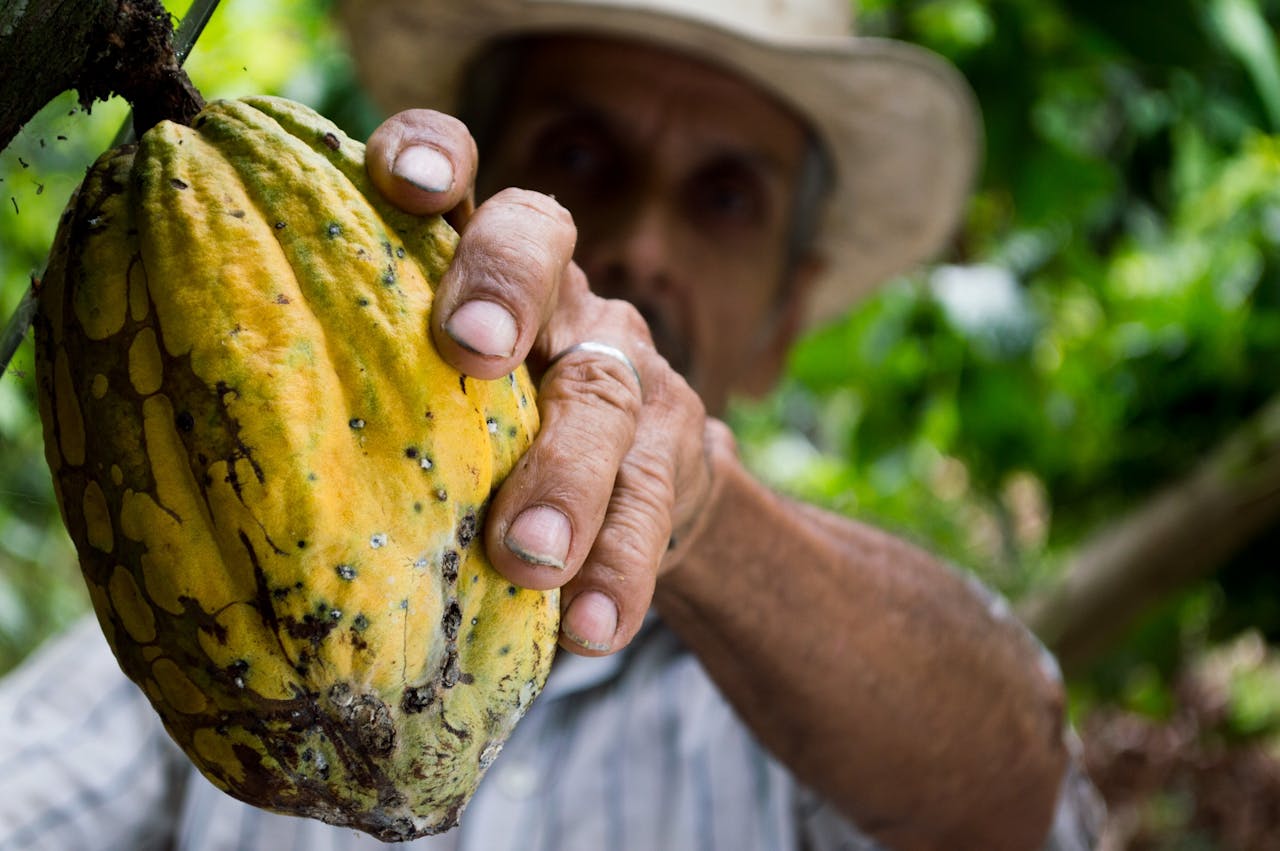
Fermentation and Drying: Traditional Methods Used in Peru
After harvesting, the cacao beans are fermented, which is an important step in developing their flavor. In Peru, traditional fermentation methods are used, often in wooden boxes or baskets lined with banana leaves. This process typically takes several days, during which the beans undergo complex chemical changes that improve their flavor profile. Following fermentation, the beans are spread out to dry in the sun, which enhances their flavor and aroma.
Roasting and Grinding: The Artisanal Process of Creating Chocolate
After drying, the peruvian cacao beans are roasted to bring out their full flavor. The roasting process is carefully controlled to avoid burning the beans, preserving the chocolate's rich, nuanced flavors. After roasting, the beans are cracked open, and the shells removed, revealing the nibs inside. The nibs are then ground into a paste called chocolate liquor. This paste is the foundation of all chocolate products and is frequently combined with sugars and oils to make the finished chocolate bar.
Must-Visit Chocolate Destinations in Peru
Top Destinations
San Martín Region
- Cacao Farms: The San Martín region boasts beautiful landscapes and diverse cacao plantations. Visitors can tour farms such as Cacaosuyo, where they can witness the entire cacao cultivation process and participate in harvesting activities.
- Sustainable Practices: Many farms in San Martín focus on sustainable farming practices, providing insights into how eco-friendly methods contribute to high-quality cacao production.
Ucayali Region
- Cacao farms: Ucayali is another important cacao-producing region. Farms such as Cacao de la Selva provide guided tours where visitors can learn about the complexities of cacao harvesting, from cacao tree growth to bean fermentation.
- Cultural Experience: In addition to seeing cacao in its natural environment, visitors can engage with local farmers and learn about the cultural significance of cacao in Ucayali.
Amazonas Region
- Cacao Farms: The Amazonas region is home to numerous small-scale cacao farms that provide authentic and intimate experiences. Farms such as Finca la Quebrada offer tours that include hands-on cacao harvesting and processing.
- Eco-Tourism: Amazonas is known for its commitment to sustainable agriculture and ecotourism, making it a great destination for those interested in responsible travel.
Ayacucho Region
- Cacao Farms: Ayacucho's farms, such as Cacao Andino, offer a detailed look at traditional cacao cultivation practices. Visitors can see the entire cacao process from bean to bar, including harvesting, fermentation, and drying.
- Community Involvement: Many farms in Ayacucho work closely with local communities, offering a chance to understand the social and economic impact of cacao farming in the region.
Cusco Region
- Cacao Farms: The Cusco region features several notable cacao farms like Finca Buenaventura, where visitors can explore the cacao-growing process and enjoy workshops that highlight the intersection of traditional and modern chocolate-making techniques.
- Cultural Integration: Cusco’s rich history and cultural heritage make it a fascinating backdrop for exploring cacao, providing a unique blend of agricultural and historical experiences.
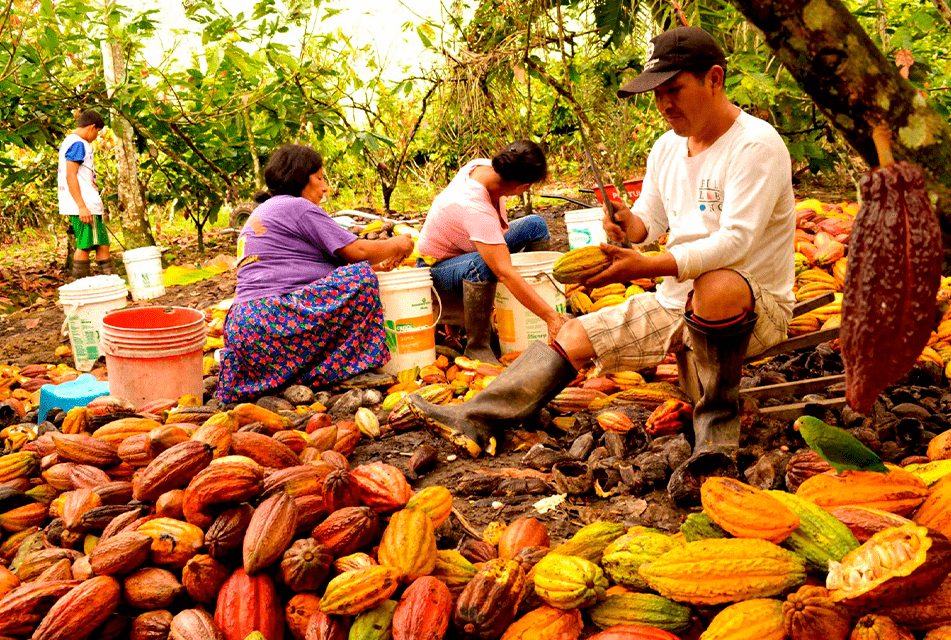
Museums
ChocoMuseo, Cusco
ChocoMuseo in Cusco is a must-see for chocolate lovers. This delightful museum takes visitors on a sensory journey through the history and process of chocolate making. Visitors can participate in Bean-to-Bar workshops, which teach them how to make their own chocolate from scratch. The museum also offers advanced truffle-making and chocolate sculpture classes, as well as tastings of various chocolate creations.
ChocoMuseo, Lima
The Lima branch of ChocoMuseo provides similar experiences, with the added benefit of being located in the vibrant capital. Visitors can learn about the rich history of Peruvian chocolate while also participating in interactive workshops.

Sustainable Chocolate Tourism in Peru
MIL, located in the Sacred Valley, is known for its innovative approach to cuisine and chocolate. The restaurant's eight-course menu features ingredients from the surrounding ecosystems, including locally sourced cacao. MIL's chocolate wing allows visitors to learn about and taste chocolate made from cacao grown in nearby Quillabamba.
The Best Peruvian Chocolate Brands
Peru boasts several world-class chocolate brands, each offering unique and high-quality products.
Amazona Chocolate
Amazona Chocolate gained international acclaim in 2018 when its Valle del Chanka Dark 72% bar won first place at the Academy of Chocolate Awards in London. Known for its rich flavor and quality, Amazona is a shining example of Peruvian excellence in chocolate-making.
Cacaosuyo, Lima
Cacaosuyo is another popular brand, known for its organic Peruvian chocolate. Cacaosuyo, which has won multiple International Chocolate Awards, produces some of the world's best chocolates. Their commitment to quality and sustainability distinguishes them as a top choice for chocolate enthusiasts.
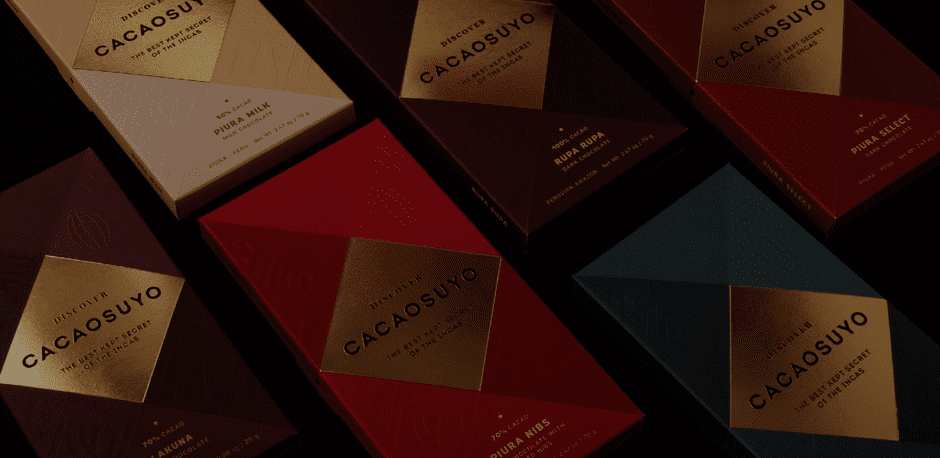
Where to Buy Authentic Peruvian Chocolate
El Cacaotal, Lima
Amanda Jo Wildey founded El Cacaotal, a boutique that specializes in artisanal chocolate. Wildey's expertise in Peruvian cacao is reflected in the shop's carefully curated selection of chocolates from local farmers and creators.
Roselen Chocolatier, Lima
Roselen Chocolatier is renowned for its hand-painted, small-batch organic chocolates. Roselen provides a truly artisanal experience, focusing on unique rainforest-inspired flavors. The shop's beautifully designed chocolates and packaging make it a popular destination for chocolate lovers.
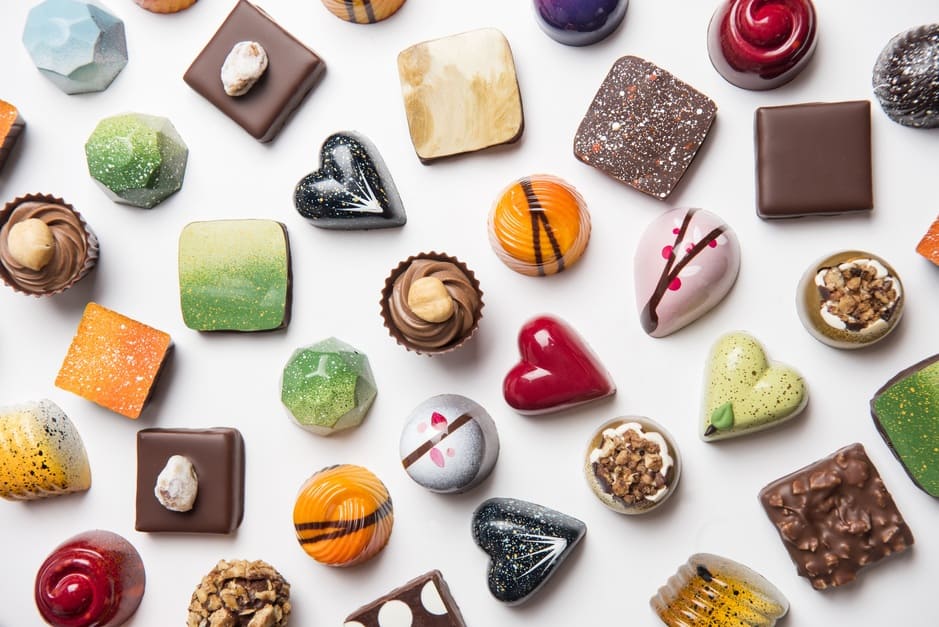
Xocolatl, Online
For those who prefer online shopping, Xocolatl offers artisan chocolates made with unique Peruvian ingredients such as pisco and aguaymanto. Each piece is presented in beautifully crafted packaging, which enhances the overall experience.
Chaqchao Chocolates, Arequipa
Chaqchao Chocolates in Arequipa provides a delightful experience that includes artisanal chocolate tastings as well as chocolate-making workshops. Visitors can also sample Peruvian coffee and craft beer while learning about cacao.
La Ibérica
La Ibérica is a popular Peruvian chocolate brand known for its rich flavors and traditional craftsmanship. The brand has a long history in Peru, and it is known for producing high-quality chocolate products that capture the essence of Peruvian cacao.
Q’uma Chocolates
Q'uma Chocolates is renowned for its dedication to high-quality, artisanal Peruvian chocolate. The brand focuses on traditional methods and sustainable practices, ensuring that their products are both delicious and environmentally friendly.
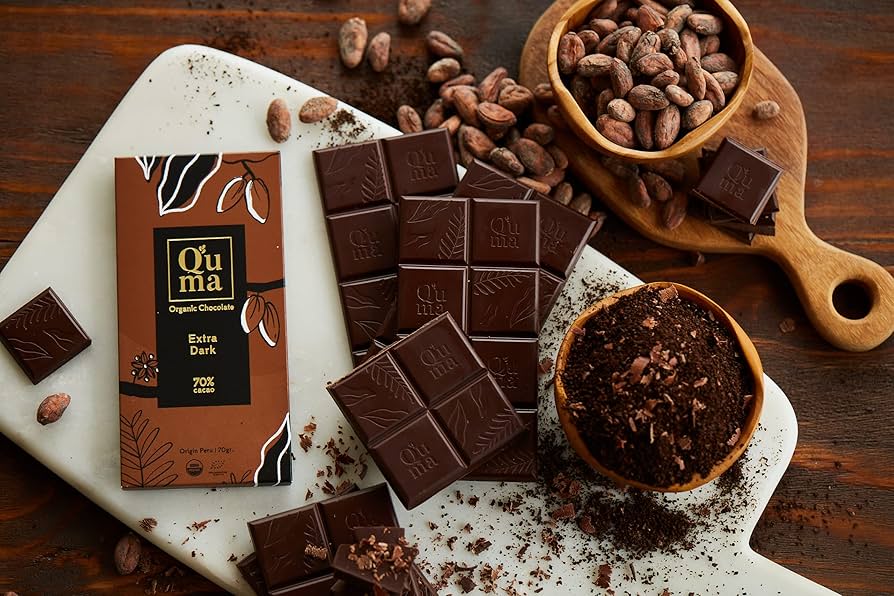
Health Benefits of Peruvian Dark Chocolate
Peruvian dark chocolate is not only delicious, but it also has several health benefits. It is high in antioxidants and can help with heart health, inflammation reduction, and cognitive function enhancement. Dark chocolate's high cocoa content is associated with improved mood and a lower risk of chronic diseases. Consuming Peruvian dark chocolate allows you to enjoy a tasty treat while also benefiting your health.
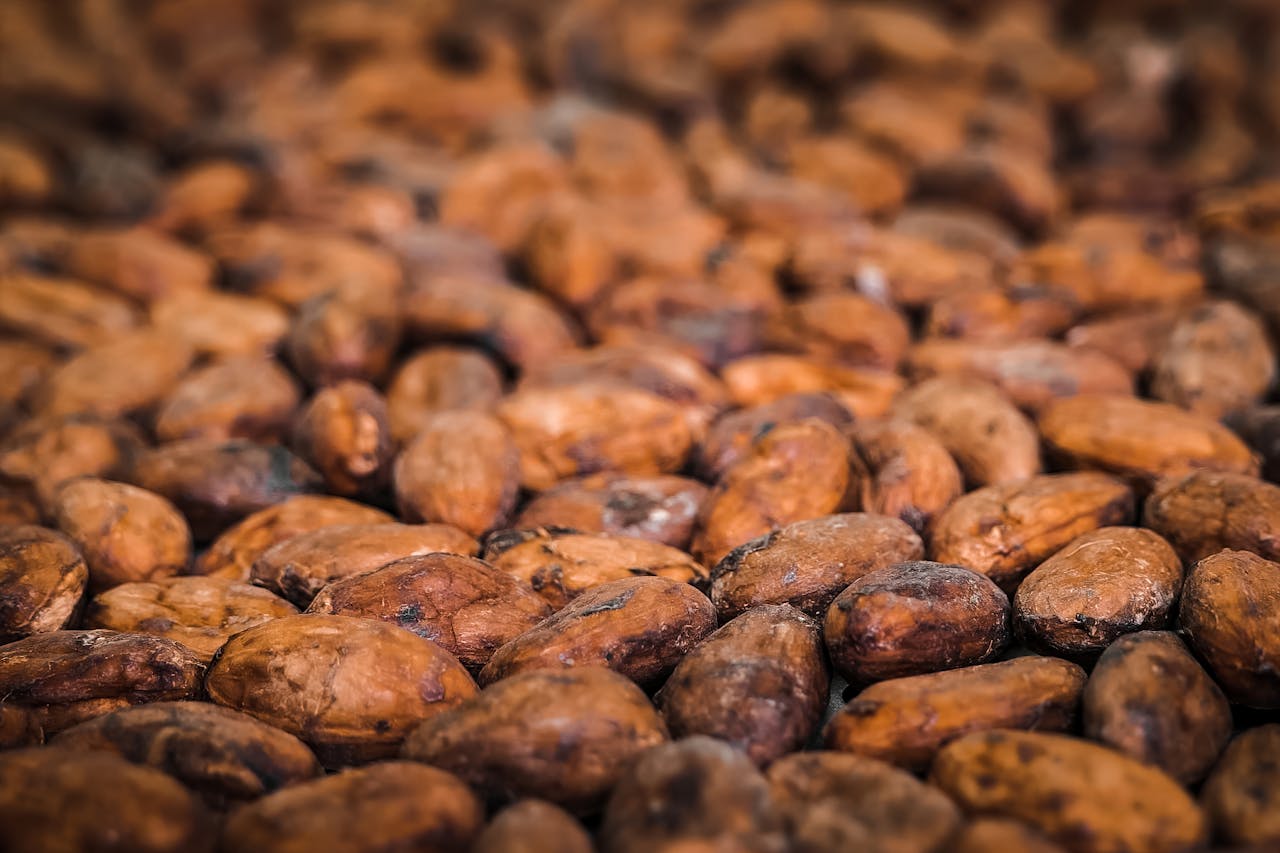
From the lush cacao farms of the Amazon to the artisanal chocolate shops of Lima, Peru provides a chocolate experience unlike any other. Whether you're learning about the rich history of Peruvian chocolate or sampling the best bars from top brands, each bite demonstrates the country's commitment to quality and craftsmanship. To truly immerse yourself in the world of Peruvian chocolate, consider taking a chocolate tour in Peru and witness firsthand the passion and expertise that goes into each piece.
Are you ready to take a delicious journey through Peru's chocolate landscape? What aspect of Peruvian chocolate are you most excited to learn about? Share your thoughts, and we'll help you plan the ultimate chocolate adventure in Peru!
